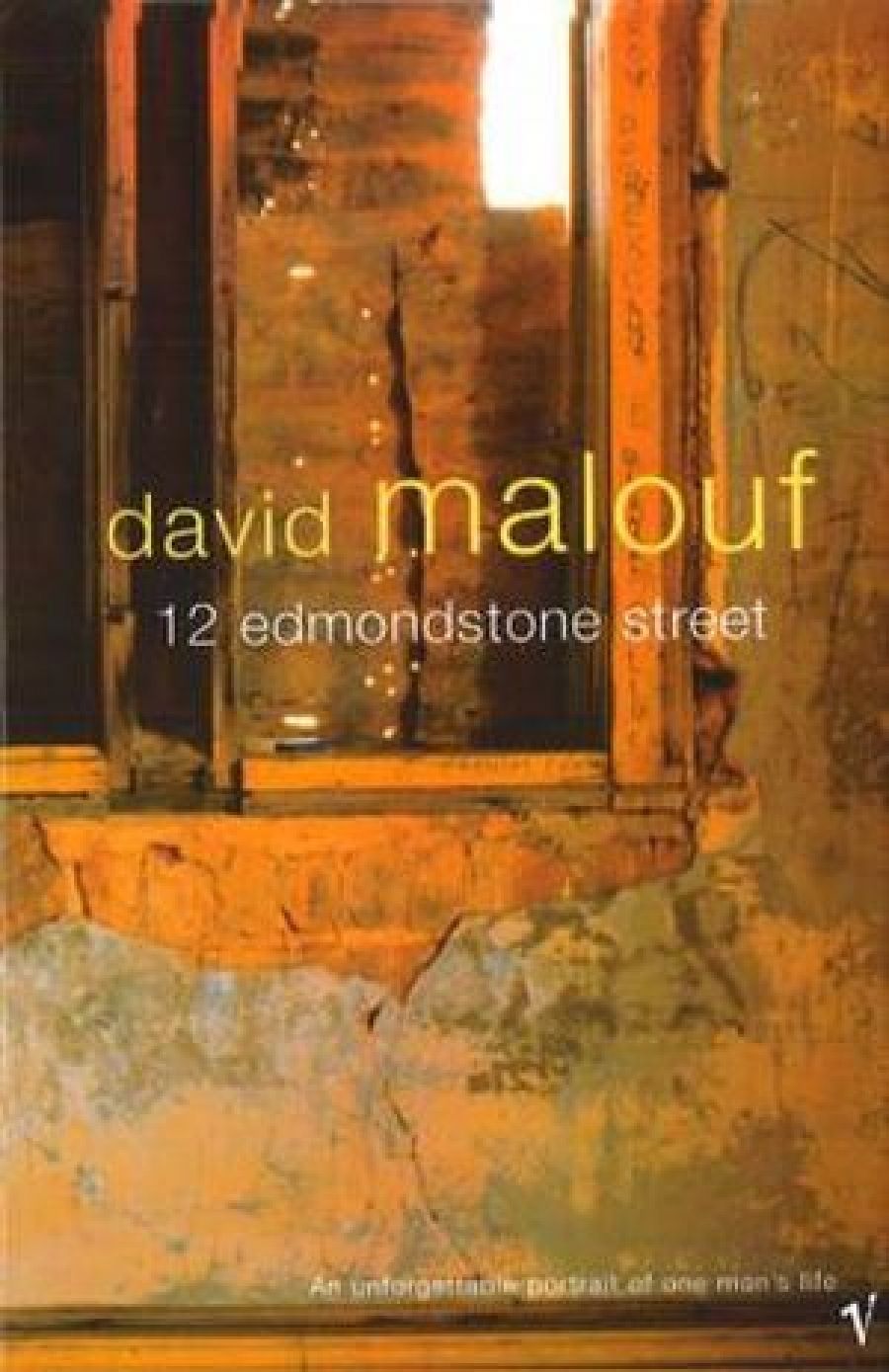
- Free Article: No
- Contents Category: Memoir
- Review Article: Yes
- Online Only: No
- Custom Highlight Text:
The opening word of this collection of stylish essays in autobiography by David Malouf is ‘memory’; it is a word that recurs regularly throughout the text and a faculty that is central to most of Malouf’s work. Malouf is a writer perpetually in exile, forever dispossessed and these essays, like most of his fiction, are an attempt to recapture and retain a sense of the past; they repeat and reformulate themes that run through his creative writing. In particular, his most recent book, the collection of short stories Antipodes, can be seen to throw a good deal of light on this memoir. The author’s intimate relationship with his grandfather rather than his parents, the tension between the Old World and the New, the powers of language and narrative and the relationship between art and experience, the notion of, as one character puts it, ‘pushing ourselves to the limits of our young courage in outrageous dares’, and finally the paradoxically nostalgic rejection of the Brisbane of his boyhood to which he returns so often in his fiction – all these themes recur from the previous book and are elaborated on.
- Book 1 Title: 12 Edmondstone Street
- Book 1 Biblio: The Australasian Publishing Company, $19.95, 134 pp, 0 7011 39706
The title essay, which is much the most impressive and the weightiest in the volume, is a precisely and lovingly recalled memoir of growing up in south Brisbane. Malouf recalls his child-house, room by room and with meticulous, patient thoroughness, takes us through every detail of each, in the process of recalling his past and naming the objects in it recovering and remastering it. Although there are sharply and vividly realised portraits of the most important people in his past, the most powerful memories are of objects. The writing is crowded, cluttered, with things – artefacts; articles of clothing, foods of various kinds, pieces of furniture, flowers, and ferns. As the author puts it:
Set loose in a world of things, we are struck at first by their terrible otherness. It drives us to fury. For a time, while we are all mouth, we try to swallow them, then to smash them to smithereens – little hunters of the track of the ungraspable. Till we perceive at last that in naming and handling things we have power over them.
The essay is a considerable feat of retrospection, a fine example of memory speaking.
The other pieces are shorter and slighter. In ‘A Place in Tuscany’, Malouf relishes the ironic incongruity of the ancient, almost timeless village in which he is residing and the television crew with their lovingly cared for ultra-modern equipment, come to film the author in his isolation.
‘A Foot in the Stream’ contains some comic and sardonic observations of India but there is nothing of the sense of having possessed a place that is present in the title essay. They are the notes of a perceptive but distanced tourist, aware of the inevitable shallowness of his perspective. The final short essay, ‘The Kyogle Line’ returns us to Australia again for more of Malouf’s best writing. It is an account of a train journey from Brisbane to Sydney in 1944, accompanied by his family. In what it says about the limits of the relationship with his father, the essay illuminates much of Malouf’s art: ‘We were shy of one another. He had always worked long hours, and like most children in those days I spent my time on the edge of my mother’s world, always half-excluded but half-involved as well.’
Having mastered poetry, the novel and the short story, Malouf has now turned to a fourth genre. In the process, he has made a valuable addition to a culture already extraordinarily rich in autobiographical literature of distinction.


Comments powered by CComment